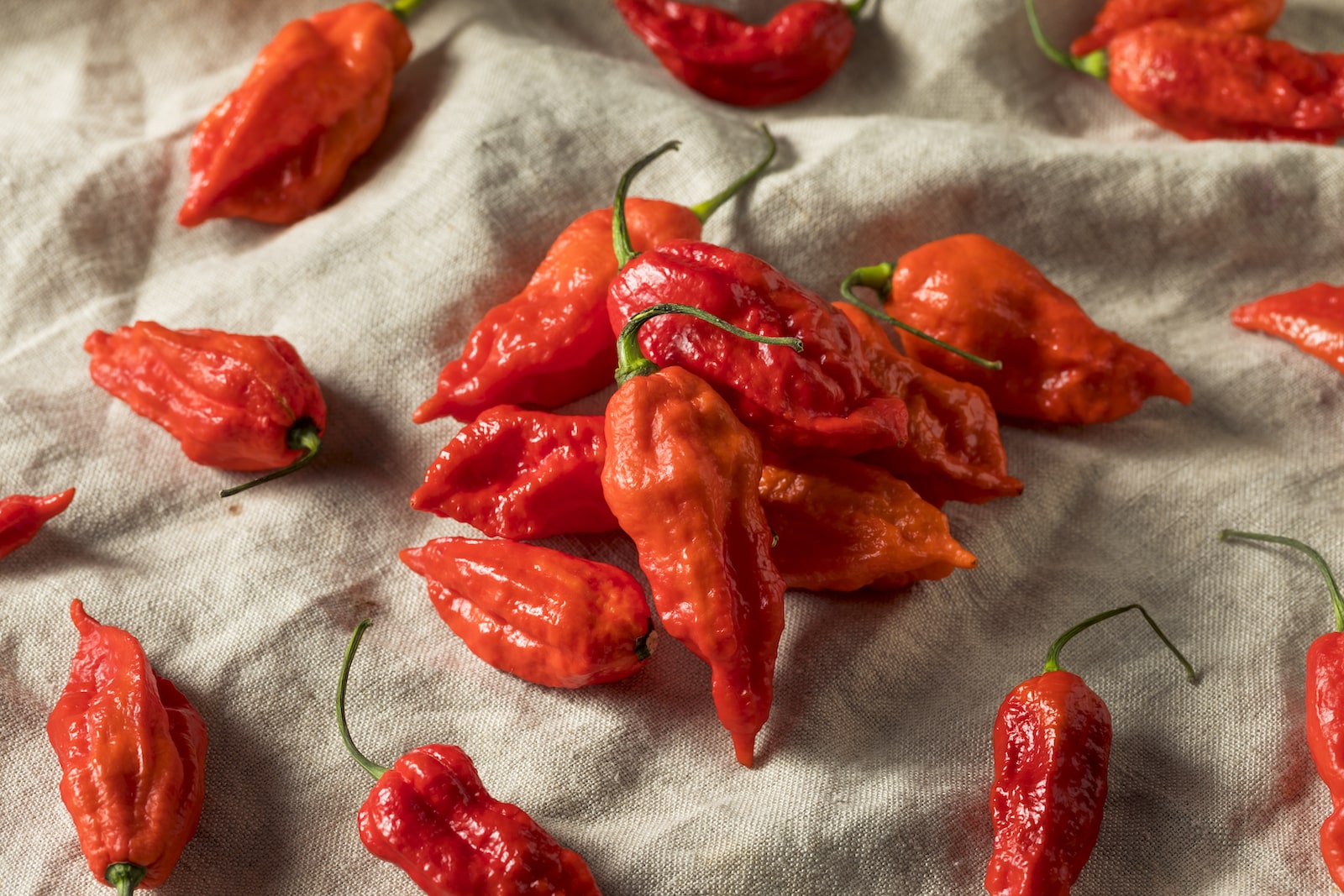

"Novel Formation of Ectopic (Nonplacental) Capsaicinoid Secreting Vesicles on Fruit Walls Explains the Morphological Mechanism for Super-hot Chile Peppers". ^ Bosland, Paul Coon, Danise Cooke, Peter H.Archived from the original on 20 November 2016. ^ "NMSU: The Chile Pepper Institute - Home"."The hottest chili variety in India" (PDF). ^ "Bhut Jolokia / Naga Chilli / King Chilli"."Capsaicin Content and Pungency of Different Capsicum spp.

Archived from the original (PDF) on 20 July 2011. "Genetic Variability and Traditional Practices in Naga King Chili Landraces of Nagaland" (PDF).
^ a b c d Raktim Ranjan Bhagowati et al. ^ "The origin of the Chili lies in the north-eastern of India, in the region of Assam.". ^ "MasterChef Australia features eight of the hottest chillies on the planet have you tried any?". ^ "India's 'ghost pepper' is one of the hottest chillies. Archived from the original (PDF) on 23 September 2015. " 'Bhut Jolokia'-The World's Hottest Known Chile Pepper is a Putative Naturally Occurring Interspecific Hybrid" (PDF). ^ a b " 'Ghost chile' burns away stomach ills - Diet & Nutrition - NBC News". Archived from the original on 19 February 2007. "NMSU is home to the world's hottest chile pepper". "The Incredible Story of Bhut Jolokia: From Rural India to Dumb YouTube Stunts". ^ It is extensively cultivated in northeastern India, especially in the states of Assam, Nagaland and Manipur. It takes about 7–12 days to germinate at 32–38 ☌. The rough fruit plants are taller, with more fragile branches, while the smooth fruit plants yield more fruit and are compact with sturdier branches. However, the red fruit variety has two different types: the rough, dented fruit and the smooth fruit. Ghost pepper pods are unique among peppers because of their characteristic shape and very thin skin. The unselected strain of ghost peppers from India is an extremely variable plant, with a wide range in fruit sizes and fruit production per plant. Ripe peppers measure 60 to 85 mm (2.4 to 3.3 in) in length and 25 to 30 mm (1.0 to 1.2 in) in width with a red, yellow, orange, or chocolate color. Unlike most peppers, ghost peppers produce capsaicin in vesicles found in both the placenta around the seeds and throughout the fruit, rather than just in the placenta. In 2005, New Mexico State University's Chile Pepper Institute in Las Cruces, New Mexico found ghost peppers grown from seed in southern New Mexico to have a Scoville rating of 1,001,304 SHUs by HPLC. For comparison, Tabasco red pepper sauce rates at 2,500–5,000, and pure capsaicin (the chemical responsible for the pungency of pepper plants) rates at 16,000,000 SHUs. In 2000, India's Defence Research Laboratory (DRL) reported a Scoville rating for the ghost pepper of 855,000 SHUs, and in 2004 a rating of 1,041,427 SHUs was made using HPLC analysis. In northeastern India, the bhut jolokia is also known as the king chilli or king cobra chilli. In Manipur, the chili is called umorok or oo-morok ('tree chili'). It has also been called the Tezpur chili after the Assamese city of Tezpur. Other usages on the subcontinent are Saga jolokia, Indian mystery chili and Indian rough chili. This name is especially common in other regions where it is grown, such as Assam and Manipur. Similarly, in Nagaland, one of the regions of cultivation, the chili is called Naga jolokia ('Naga chili' also romanized nôga zôlôkia) and bhut jolokia (also romanized bhût zôlôkiya). In Assam, the pepper is also known as bih zôlôkia ('poison chili'), from Assamese bih 'poison' and zôlôkia 'chili pepper,' denoting the plant's heat. 
The name bhüt jolokia (ভোট জলকীয়া) means Bhutanese pepper in Assamese the first element bhüt, meaning Bhutan, was mistakenly confused for a near- homonym bhut meaning ghost.







 0 kommentar(er)
0 kommentar(er)
